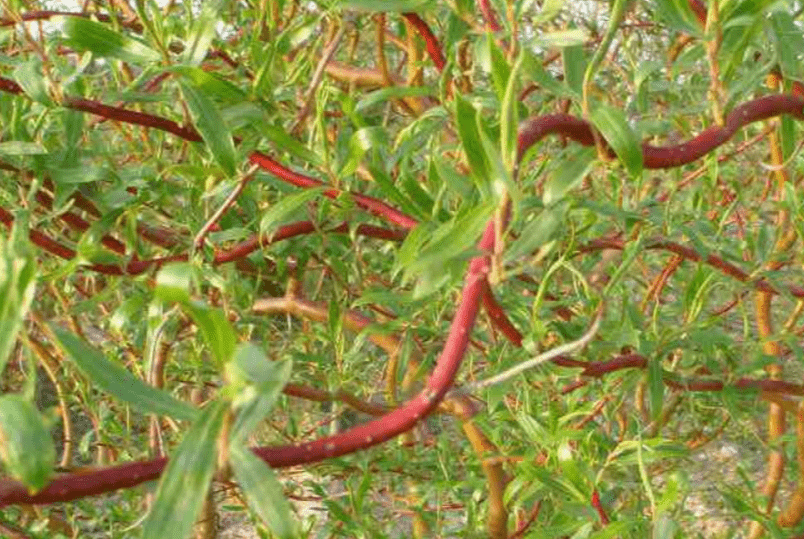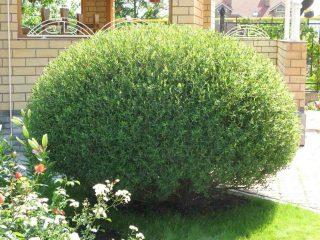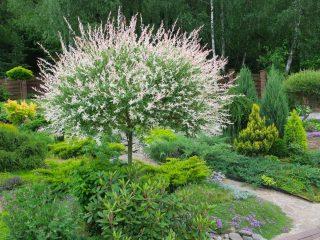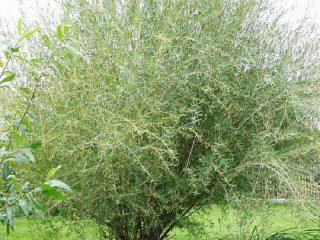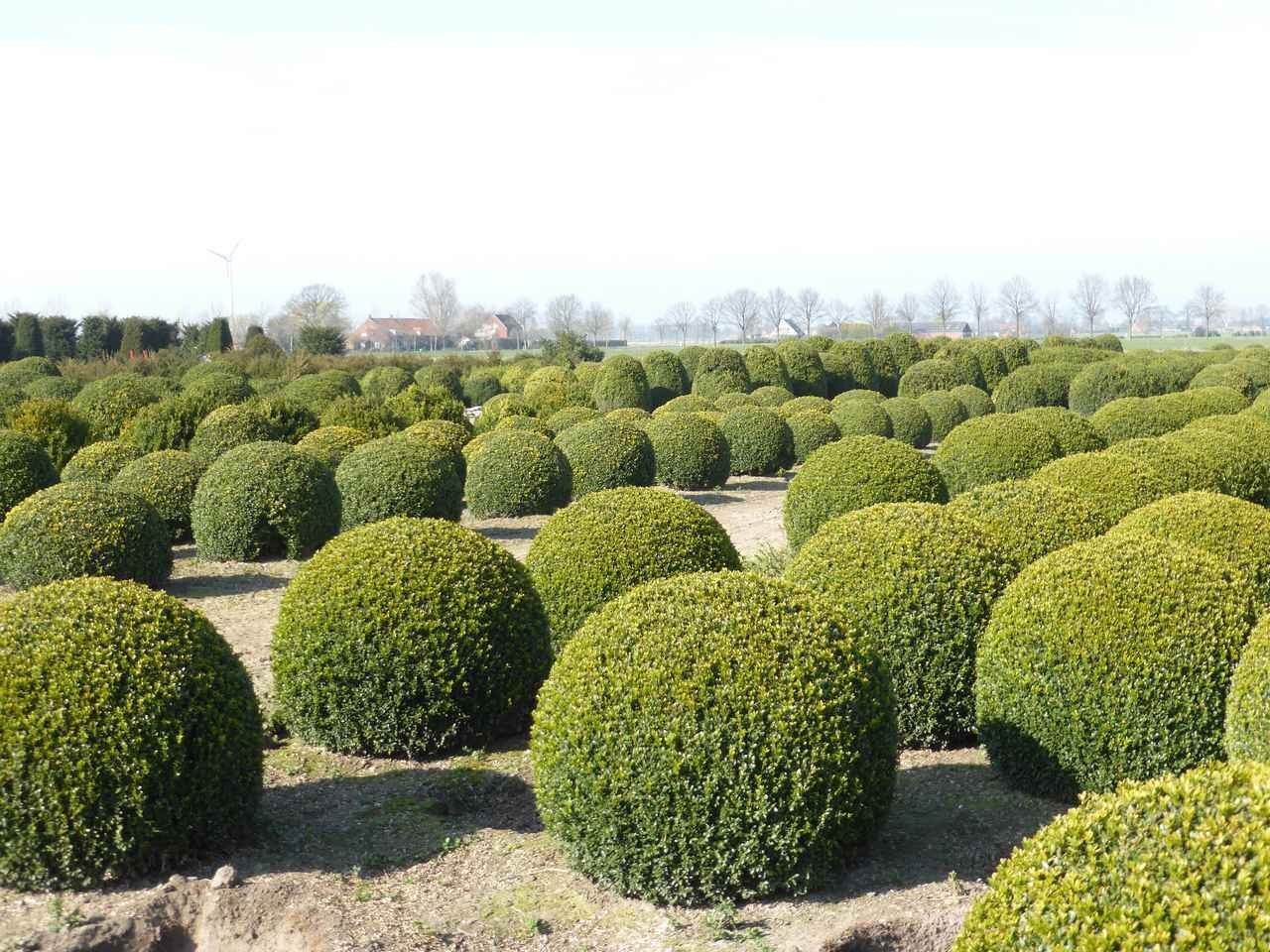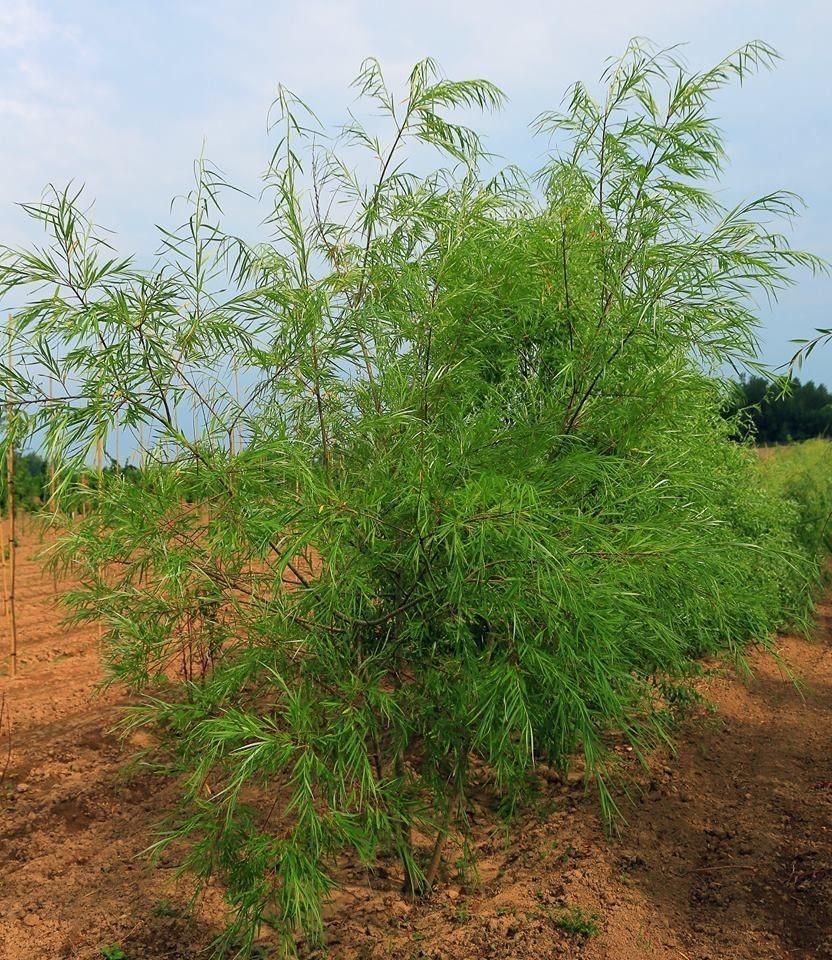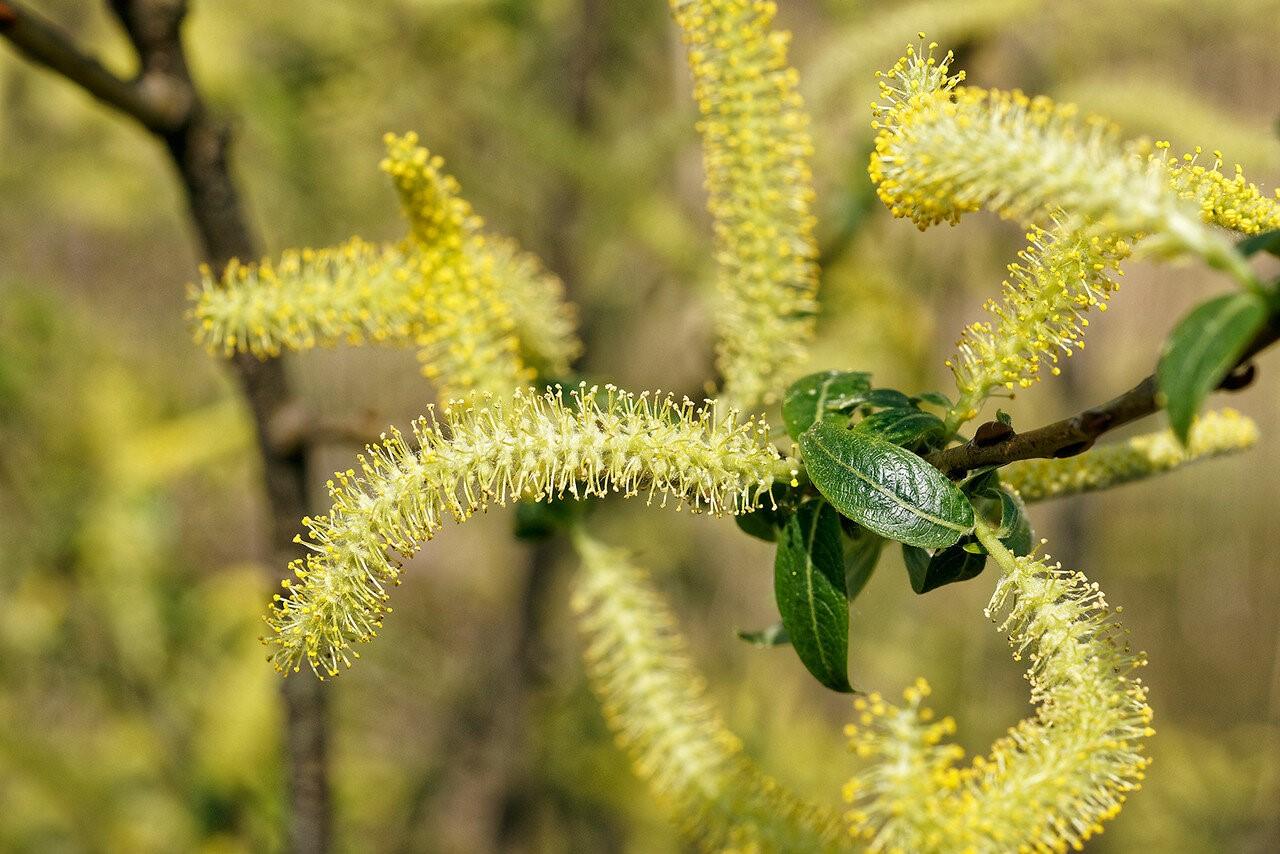Content
There are almost 600 varieties of willow, which are found everywhere in Europe, Asia, Russia, partly in North America and even in Australia. As a rule, these are trees, although shrubs and even herbaceous specimens can often be found. A description of the most popular varieties with photos can be found in the presented material.
Description of willow
Willow is a genus of trees from the family of the same name. There are several common names adopted in the Russian language:
- lozina;
- broom;
- willow;
- vine;
- willow;
- willow
Willow leaves are usually narrow in shape, quite large, reaching 5-10 cm in length, often up to 15 cm or even more. They grow on petioles, arranged oppositely, sometimes alternately, depending on the specific variety. The color is darker above, lighter below, sometimes with a bluish, silver or white tint.
The stems branch well, the branches are thin, flexible, drooping, and sometimes erect. The bark is matte or shiny of various colors. The trunk can be either small or thick (up to 3 m in diameter). Quite durable, does not break even with strong gusts of wind.
Almost all varieties of willow bloom in the first half, mid-spring.Flowers appear almost simultaneously with leaves or before them. They are represented by elongated catkins with very small yellowish-mustard flowers. At the end of summer, fruits appear in capsules with two doors. The seeds are small, with white pubescence, light, and well dispersed by the wind.
What types of willow are there: names and photos
About 550 species of willows are known, which are found both in natural conditions and in gardens, parks, public gardens, and on private plots. At the same time, quite a few species of willow are grown in Russia. These are mainly winter-hardy varieties that are suitable for almost all regions.
White willow
White willow, also called white willow or willow (Salix alba), is one of the common varieties of willows that can be found in Russia from the European part to Western Siberia. A tall tree, reaches 20-30 m. The crown is tent-shaped or broadly rounded, often weeping.
The trunk is powerful, reaches 2-3 m in diameter, and is wide in girth. Mature trees most often develop several trunks. Bark with cracks, dark gray color. In older representatives it becomes rougher, and the cracks become deeper.
The shoots of this variety of willow are dark green or with a reddish-brown tint. The foliage is alternate, narrow in shape, with finely serrated or entire edges and pointed tips. They reach a length of 5 to 15 cm, while a width of only 1-3 cm.

During blooming, the leaves are painted whitish, which is why the name of the variety is associated.
Willow brittle
Brittle is a very famous and common variety of willow, often called broom (Latin name Salix fragilis). It reaches a height of 15 to 20 m, while spreading up to 6-8 m in width (by the age of 10 years).The bark has a gray-brown tint, and deep cracks are clearly visible on the surface.
The branches grow straight, drooping only partially. They have no pubescence, the surface is shiny, the color is dark green with a reddish tint. The leaves of this variety of willow are narrow and lanceolate. They shine well in the sun, have a file shape at the edges, and the tip is very elongated. They reach a length of 5-7 cm, and a width of only 1-1.2 cm. In the fall they begin to turn yellow, but often fall green.

After the fourth year of life, the shoots become fragile, which is why the willow is called brittle
goat willow
The goat willow variety (Salix caprea) has several names:
- nonsense;
- broom;
- Willow Hultena.
The main name is due to the fact that sheep and goats feed on its branches and leaves. The description and photo of this variety of willow shows that the tree has a small trunk, the diameter of which reaches only 75 cm. But it grows quickly along with the branches, and after a few years the tree reaches 6-10 m (sometimes 15 m). Due to developmental delays, it can grow up to 5-7 m - in appearance it resembles a shrub.
The bark is without relief cracks, greenish-gray in color, although as it matures it begins to turn brown. The branches spread out well, are quite thick and strong. The color is grayish, with pubescence; after a year it changes to greenish-gray or yellowish-brown.
The leaves of this variety of willow are ovate or lanceolate in shape, somewhat reminiscent of bird cherry foliage. They are quite large in length - up to 12-18 cm. They generally reach 2-5 cm in width, although sometimes they grow up to 7-8 cm.

The trunk of the goat willow is not wide, but it grows quickly
winding
This variety (Salix Erythroflexuosa) received its name because of its twisting branches. They bend quite strongly and resemble curls. Moreover, the shoots are clearly visible thanks to the narrow leaf plates of a bright green color. The tree grows in height from 4 to 13 m.
This plant has great potential for garden decoration. Thanks to proper pruning, it can be given almost any shape, including a garden bonsai. Within the variety, several varieties have been obtained, the most famous are two:
- Matsuda willow (Salix matsudana) – frost resistant. It blooms beautifully, produces attractive narrow foliage, and grows up to 13 m. When growing, it should be taken into account that this willow has very fragile branches. Pruning must be done carefully.
- Sverdlovsk willow is even more winter hardy, which allows it to be grown even in the conditions of the Urals and Siberia. The bark is brownish-red, the branches are highly sinuous, of an original shape. It does not produce flowers, but still looks quite attractive throughout the season.
purple willow
Salix purpurea is a species of very beautiful willow that grows in Africa, the temperate climate zone of Eurasia up to Japan and the countries of Central Asia. It usually reaches a small height - from 2 to 4 m, less often up to 10 m. It grows in the form of a shrub, in cultivation often within 1-1.5 m. The bark has a bluish coating. The branches bend very well, with a smooth surface.
The willow variety gets its name from the purple stamens with blackening anthers. However, the decorative effect is not even associated with flowers, but with numerous leaves of a very narrow shape. They reach 3-8, sometimes 13 cm in length, and only 1-1.5 cm in width.The color is soft bluish, with a bluish tint.
Quite a lot of leaf blades appear, they are arranged alternately or oppositely. Flowering occurs from March to May, almost simultaneously with the beginning of leaf blossoming. The earrings of this variety are of the lateral type, sessile, and cylindrical in shape.

Purple willow is decorative due to its narrow bluish leaves
Entireleaf
The whole-leaved variety (Salix integra) is represented by a low willow, growing to only 2-3 m. Interestingly, the crown, which has a rounded shape, spreads out about the same. Shoots with a shiny surface, dark green or purple in color. They don't droop, they grow straight.
The leaves are arranged almost oppositely. They have an oblong, narrow shape, reaching from 2 to 7 cm in length and 1-1.8 cm in width. They are rounded at both ends, grow without petioles, and are sessile. A short sharp tip is visible at the top. The color of the upper side is dark green, and the lower side is bluish.

This variety of willow is decorative due to its spreading, rounded crown.
Babylonian
The Babylonian willow is often called the weeping willow - the Latin name for the variety is "Salix babylonica". It grows like a not very tall tree - up to 10-12 m. The trunk is strong, but small - it reaches 50-60 cm in diameter. The crown is represented by long, thin branches hanging to the surface of the ground. They are naked, have no pubescence, shine in the sun, and are reddish or yellowish-green in color.
The leaves of this variety of willow are oblong or narrowly lanceolate, have a point elongated towards the apex. Quite large in size, 10-16 cm long and only 1-2.5 cm wide. The edges are serrated, the color of the upper part is dark green, the bottom has a bluish tint. Young foliage has slight pubescence, but by the end of the season it becomes bare.

The Babylonian variety of willow has an almost symmetrical, moderately spreading crown
Willow globulus
The name of this variety of willow (Salix fragolis) speaks for itself - the tree is distinguished by a spherical, widely spreading crown. Moreover, it grows no more than 7 m in height, but it still looks quite beautiful. The bark is light in color, the branches are distinctly curved, making the crown almost symmetrical and oval. The foliage is grayish-green.
This variety of willow grows well in a wide variety of soils, including clay. It is characterized by high winter hardiness, so planting in any region can be considered. Needs regular pruning to maintain a beautiful crown. It can be done both in spring and autumn.

Willow globulus is one of the most beautiful varieties
grassy
Herbaceous willow (Salix herbacea) is the rarest willow in terms of height. This is a turf or dwarf shrub, growing to only 2-5, less often 10-15 cm. The stems are thin, and they are always covered with wood, which makes the plant similar to real trees.
They climb along the ground and take root well, so they can be used as a ground cover crop. Each shoot grows 2-4, less often 6 leaves of rich green color. Their length and width are approximately the same - 1-2.5 cm each.
Unlike most other varieties, the shape of the leaves of the herbaceous willow is not narrow-lanceolate, but rounded. The surface is bare and shines well in the sun. In spring it produces earrings that are pale purple or greenish-yellow in color.

This willow looks nothing like a tree
Willow reticulum
Reticulated (Salix reticulata) is another creeping variety of willow, reaching a height of only 15 cm. It produces red-brown branches up to 75 cm long. The foliage of this willow is ovate, up to 5 cm long and 3.5 cm wide. Rounded shape , edges whole or jagged. The surface is leathery, glistens in the sun, the color is dark green above and bluish-white below.
Earrings appear late and have a thin cylindrical shape. Densely flowered or loose, 1.5-3 cm long. Reticulated willow grows almost everywhere, including in the regions of the Far North. It is used as food by reindeer.

The name of this variety of willow is associated with the characteristic mesh pattern on the surface of the leaves.
Other
There are other popular varieties of willow for the Moscow region, the middle zone and other regions:
- Caspian (Salix Caspian) - spreads well, produces thin long shoots of pale yellow color. The foliage is narrow and tough. Willow grows well in shade and sun, but is not very winter hardy.
- Spiral (Salix Erythroflexuosa) - this variety is usually grown as a shrub, reaching a height of 2-3 m. Willow has curved shoots. The bark has an interesting orange color.
- Bicolor willow (Salix bicolor) is a shrubby variety that reaches a height of several meters. In Russia it is not so common; it is suitable for the climatic conditions of the South, Lower Volga and Black Earth regions. The name is associated with the color of the leaves - darker on top and lighter below.
Popular varieties of willow for the garden
If you consider a beautiful variety of willow for the garden, you can choose among popular varieties with an attractive crown and unusual leaf color:
- willow (Salix elaeagnos) – a compact variety with a spreading crown up to 4 m wide;
- Bullata willow (Salix bullata) – tree up to 10 m, a variety with a rounded shape;
- thin columnar willow (Salix gracilistyla) - a shrub reaching a height of 1.5 m, the shape of the crown is flattened and round, the foliage is of an interesting silver color (on the underside);
- Ledebourian willow (Salix Ledebouriana) is a tall shrub, reaches 4-5 m, has a spreading crown. Mostly
Which one to choose
There are quite a lot of varieties of willow, so the question arises of how to choose the right variety for growing in the garden. To do this, it is recommended to pay attention to several criteria:
- Height and spreading of the willow crown. There are classic trees - they require a lot of space. But if there is not enough of it, it is better to consider shrubs up to 3-4 m high.
- Application in garden design - large trees are suitable for single plantings, and shrubs can be used in compositions. Herbaceous varieties, such as reticulated willow, make an excellent ground cover.
- Winter hardiness - almost all varieties can withstand severe frosts, but some can only be grown in the southern regions (for example, bicolor willow).
- Features of care - most species and varieties are undemanding, but some require good growing conditions. If you don’t have time to garden, it’s better to stick to classic varieties, such as goat’s or white.
Conclusion
Varieties of willow can be used to decorate almost any garden.Low species are suitable for compositions with other shrubs or tall bushes, for example, with peonies. Tall trees are best used for single plantings at a great distance from buildings.



